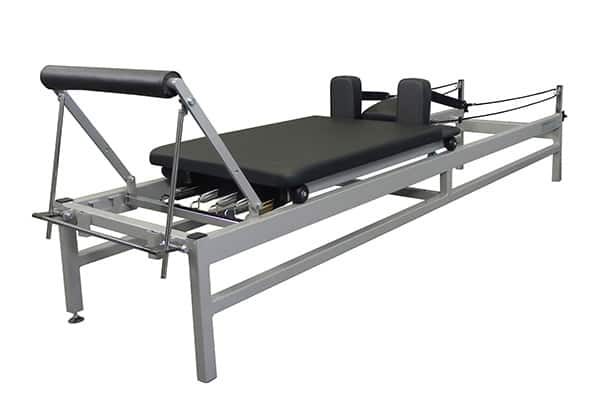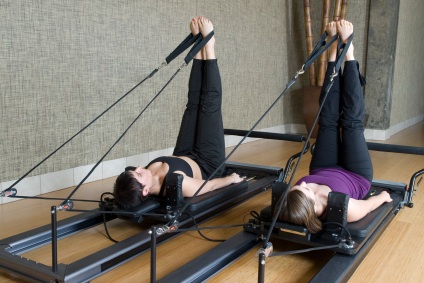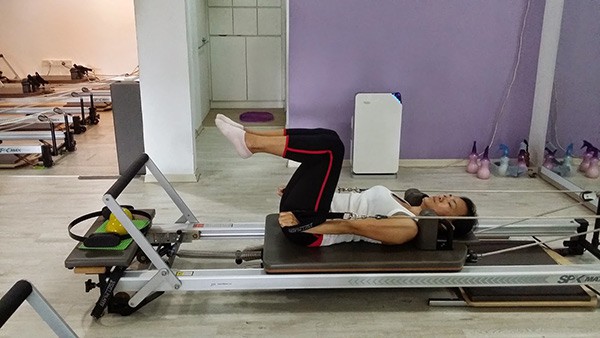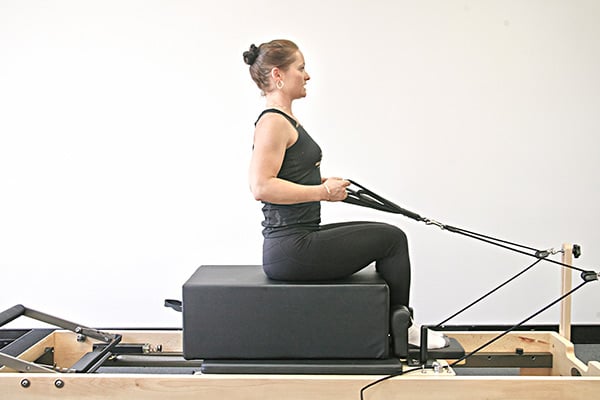Pilates Reformer: Your most burning questions answered!
Pilates reformers… That medieval contraption I can see out of the corner of my eye in many a gym these days. Seriously toned people on a reformer making some very interesting poses look as easy as riding a bicycle. Let me be clear, reformer classes are hard work, but have an amazing effect on your core, strength, flexibility and posture. Hopefully the following post will be able to answer many of your questions, allay your queries and have you ready to get involved in the wonderful world that is, ‘Reformer Pilates’.
1. Do I need to have completed Pilates in the past
Short answer- No! While it is good to have a background in some form of core exercise class to transition into reformer-based classes, many Pilates beginners actually start out on a reformer. Conversely, people have successfully transitioned from matwork into reformer-based classes. I have written about Pilates in previous posts here and here. These articles give you an understanding of the role that Pilates plays in not only a rehabilitation setting, but also a preventative form of exercise.
Our initial screening prior to beginning classes will offer a complete overview of some individual areas that we need to focus on and challenge in subsequent training. By tailor-making your own program, we can measure and re-measure where you are at both during and at the end of term.
2. What is a reformer?

A reformer is a machine used in classes that facilitates greater intensity and is more dynamic than matwork classes. The carriage of the reformer is loaded by a number of tensioned springs (usually 5) that attach to the carriage of the frame. When the carriage slides, horizontal resistance is then created.
A number of ropes and pulleys can also be attached to the carriage. These can be used to create additional resistance, or alleviate it (as required).
Exercise on a reformer builds on the existing movements of matwork and offers more variety. Exercises can be performed in a number of positions including: lying on your back or stomach, sitting, standing, kneeling, pushing a foot bar, perched on shoulder pads, feet in straps and hands in straps.
The sheer variety of poses enables easy progression for many exercises in your program, which will further challenge your core.
3. What are the goals of a reformer workout?
Firstly, muscles are targeted to build tone and endurance. This can result in improved stability in and around the joints, especially in the lower back and pelvis. Flexibility also has a strong emphasis whereby adding in a number of different exercises challenges those core stabilisers more.
Furthermore, reformer Pilates can be used as a sports’ specific training tool. With the focus on core stability, it has many implications for athletes focusing on muscular endurance, balance and co-ordination.
We can also isolate single leg or single arm movements to mimic a certain function- such as a golf swing or karate kick.
An article I was reading just the other day indicated that the St. George Illawarra Dragons had included some specific Pilates movements into their NRL preseason. This further demonstrates the popularity of Pilates within a professional sporting complex.
Reformer workouts are an excellent tool for rehabilitation. The low impact nature of the workout allows many joints to work in a plane of motion that it has not worked in for a long time (it does take time to get used to this again!). Target audiences for us, in this rehabilitation setting, are; office workers, people with a history of back pain, and mum’s recovering from childbirth.
4. Is it safe?
YES! I agree that the actual machine itself looks intimidating. Like anything, once you have practiced on the reformer with the assistance of a professional overlooking your every move, your confidence will soon grow. Active demonstrations are a feature of our classes, as well as continual feedback and encouragement. Once you have participated in a block of reformer classes, you will be well equipped to take your reformer work to the next level.
5. How long have they been around?
The origins of the Pilates reformer date back to the original Pilates studio in New York in the 1920’s. Joseph Pilates designed the program himself as a way to further challenge his class. He devised the Pilates method as a new approach to exercise and body reconditioning.
6. Do I have to wear tights?
UP TO YOU! I recommend comfortable, loose fitting clothing. Whilst it is an exercise class, the only thing you need to bring is a water bottle.
7. What is the first session like?
After your initial screening and with a few focus areas identified, getting comfortable on the reformer and setting up with your 5 key elements is essential to start with. Generally we will target the lower back, pelvis, lower limb and upper limb muscle groups in order to get the whole body moving. The second part of the session will generally hone in on our individual variances.
8. What are some beginner exercises on the reformer?
a) Table top
b) Feet in Straps

c) 100 Arms

d) Arms in straps

When I can sign up?
As a side-note, I am very pleased to announce that Sport and Spinal Physiotherapy are currently running Pilates Reformer classes during school terms at our shiny new Gungahlin practice. Our classes are specifically capped at 5 people to ensure quality instructing with appropriate progressions and regressions. Classes will run for 45 minutes. If you require any further information, please feel free to contact us on 6262 4464.